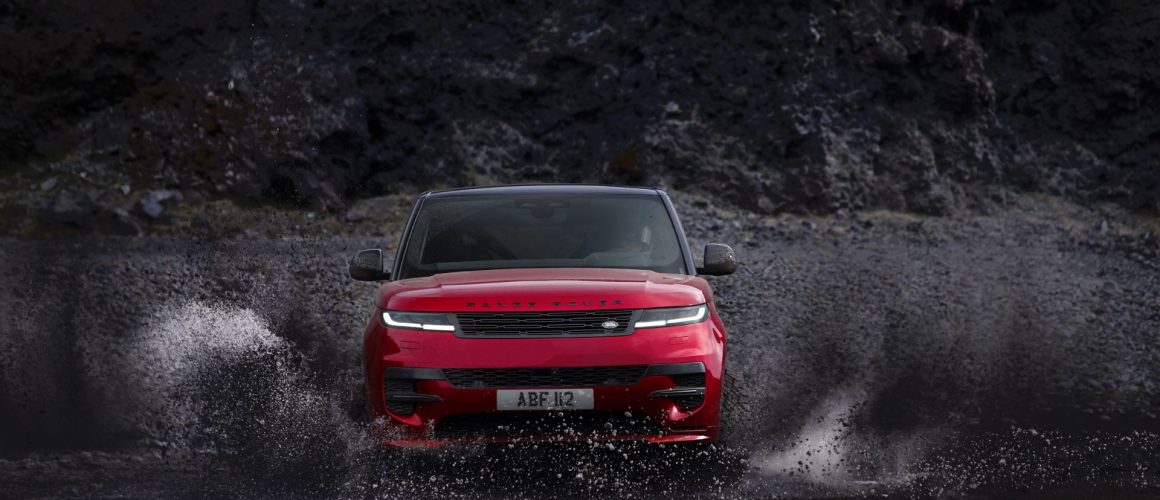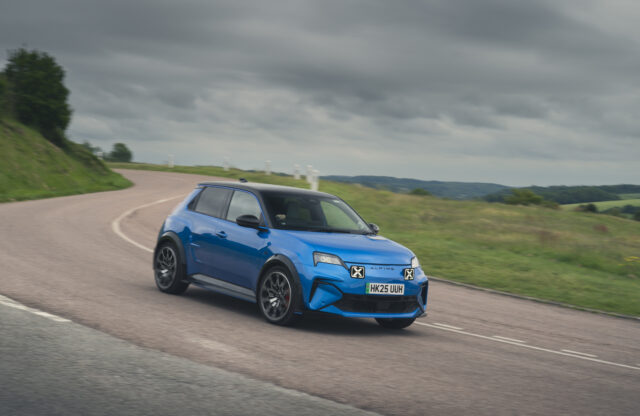WORDS: ELLIOTT HUGHES | PHOTOGRAPHY: JAGUAR LAND ROVER
Jaguar Land Rover (JLR) has unveiled its third-generation Range Rover Sport. The new 2023 model aims to continue the success of the Sport nameplate, which marked the beginning of the Range Rover family’s expansion back in 2005.
The new Range Rover Sport comes seven months after the full-size fifth-generation Range Rover made its global debut in October, 2021.
As with its larger stablemate, the new Sport has been given a modern, sleeker aesthetic with a flush greenhouse and door handles along with smooth, sculptural bodywork.

Another obvious aesthetic change is to the car’s lights, which are slimmer and more aggressive at the front, and arranged in a sleek central strip across the tailgate.
Despite the stylistic changes, the new Sport looks familiar on the outside, largely because many of its design cues have already been seen on the Range Rover Velar and Evoque models. Whether potential buyers will think this detracts from the visual impact of the new car remains to be seen.
A veneer of familiarity belies what is an all-new platform under the skin. The aluminium and mixed-metal MLA-Flex structure boasts 35 percent greater torsional rigidity than the outgoing model and provides greater scope for electrification; Land Rover has confirmed an all-electric Sport will be available from 2024.

Land Rover’s commitment to electrified powertrains is already evident with the Sport’s range of mild hybrid and PHEV petrol and diesel straight-sixes.
The P510e spec is the Sport’s range-topping PHEV hybrid option, and pairs a 141bhp electric motor with Land Rover’s 3.0-litre Ingenium petrol straight-six for a total output of 503bhp. This is followed by the P440e PHEV, which produces 433bhp. Owners can expect a zero-emission range of around 70 miles from both models.
A variety of mild hybrid petrol and diesel engine options sit below the two PHEV offerings in the range, and produce between 355bhp and 395bhp depending on specification. All are also Ingenium 3.0-litre straight-sixes.

Happily, a full-fat V8 remains as the Sport’s flagship mill in the most expensive P530 variant. Even so, the latest V8 offering has been downsized to a 4.4-litre twin-turbocharged unit from the 5.0-litre supercharged engine offered in the previous generation. Power is also reduced from 542bhp to 522bhp. Even so, the new V8 model is still ludicrously fast for a large SUV, boasting figures of 0-62mph in 4.3 seconds and a top speed of 155mph (limited).
Every engine delivers its power via an eight-speed automatic ZF transmission and full-time four-wheel-drive system. The Sport’s torque-split is biased to the rear wheels for more driver-focused handling than the full-size Range Rover, and is complemented by the new Stormer Handling Pack.
The pack is exclusive to the Sport and references the Range Stormer concept that preceded the release of the first-generation car in 2005. It combines an electronically controlled limited-slip differential with torque vectoring, an active anti-roll system, adaptive air suspension and rear-wheel steering.

“Land Rover’s MLA-Flex architecture and the latest chassis systems come together to deliver the highest levels of dynamism we’ve ever seen on the Range Rover Sport,” says JLR’s director of vehicle programmes Nick Collins. “The result is the most engaging and thrilling Range Rover Sport ever.”
Prices start from £79,125. For more information on the new Range Rover Sport, click here.




